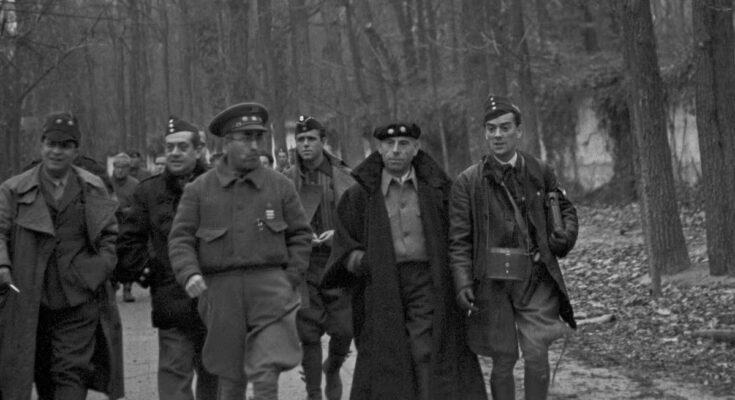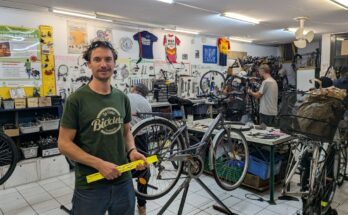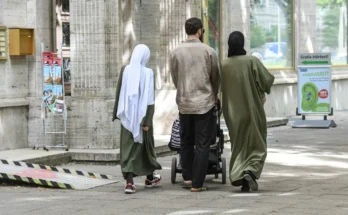In Tomb IX of the Alicante Cemetery lie the mortal remains of, in the beginning and before it was excavated, 52 shot by Franco. Among these, those of Antonio Ortega Gutiérrez, a high-ranking republican soldier who was born in Rabé de las Calzadas (Burgos) and held the positions of civil governor of Guipúzcoa, general director of Security and commander of the Army. Furthermore, with sporting competitions suspended during the war, he was president of the Madrid Foot-Ball Club, the name by which Real Madrid CF was called at the time, between 1937 and 1938. At the end of the war, he was arrested in Alicante, the last territory controlled by the Republic, and shot.
“Apparently, Ortega was president of Madrid because he was a high-ranking military man and was there,” says Jorge García Fernández, archaeologist from the Drakkar Consultores company who, together with the professor of Contemporary History at the University of Alicante (UA) José Ramón García Gandía, has just developed the intervention project in the mass grave of Alicante which the Municipality of Aspe (Alicante) promoted with a grant of 8,300 euros from the Department of Justice of the Generalitat Valenciana. “During the Civil War the championship was suspended,” adds García Fernández, “only friendlies were played.” But the merengue team was still standing, it no longer had the royal title that linked it to the monarchy, and it needed a president to represent it. The government decided it was Ortega.
The story of this man from Burgos during the war far transcends the presidency of Madrid. According to the documentation presented in the project report, Ortega was a lieutenant in the Carabineros at the Irún border post when the military under Franco’s command rebelled. After having escorted Count Romanones to France, in August 1936 he was appointed civil governor of Guipúzcoa, a position which ceased after the fall of the autonomous government of the Basque Country. He went to Madrid, where he fought for the Republic until in May 1937 he was appointed Director General of Security by Juan Negrín. His possible involvement in the arrest of Andrés Nin and other leaders of the Marxist Unification Workers’ Party (POUM) forces his dismissal. In 1938 he became commander of the army, remained loyal to Negrín, even after Luis Casado’s coup, and was finally arrested in Alicante in April 1939, while trying to board a ship bound for Algeria. He was shot three months later, on July 15.
“The peculiarity of Alicante,” García Fernández points out, “is that there are many republicans from all over Spain who tried to escape from the port and were captured here.” This complicates the identification of the remains found in mass graves, since “many of them are young and without descendants”, which complicates their identification through DNA, “and there are cases in which families do not even know” the final fate of those who suffered retaliation.
In Tomb IX of Alicante lie “residents of 15 different municipalities of Alicante” and prisoners from Cáceres, Badajoz, Cadiz, León, Burgos and Almería. Among these, the welder José Martí, executed at the age of 58, who held the position of mayor of Novelda. Or Manuel Bellot, shoemaker from Elda, president of the CNT and mayor of his hometown, killed at 35. And next to the Madrid president there is also Santiago Bernabéu Aguado, a 32-year-old shoemaker from Elden, sentenced to death by court martial and who, according to García Gandía, “is not related” to the architect of the golden era of the Madrid club in the 1960s.
The work of documenting and identifying the remains that each mass grave may contain is long and meticulous. First, “a register was drawn up of all the people shot,” explains the UA historian, “who appear in the cemetery registers” of Alicante, deposited in the municipal archive.
This document also indicates the concrete grid in which they were buried, within several plots. Tomb IX, as recorded in the registers of the Generalitat Valenciana, belongs to lot 19. To complete the documentation of most of the people subjected to retaliation, we go to the Defense Archive of Madrid, where the summaries are recorded. This is “the first step” of the project to recover the mortal remains. The next steps will be “exhumation”, explains García Gandía, “identification via DNA” and, in case the relatives deem it appropriate, “reinhumation”. The UA professor is confident that the second phase will be awarded “in February next year”. He estimates that the excavation of 52 mortal remains will require “one or two months” of work.



